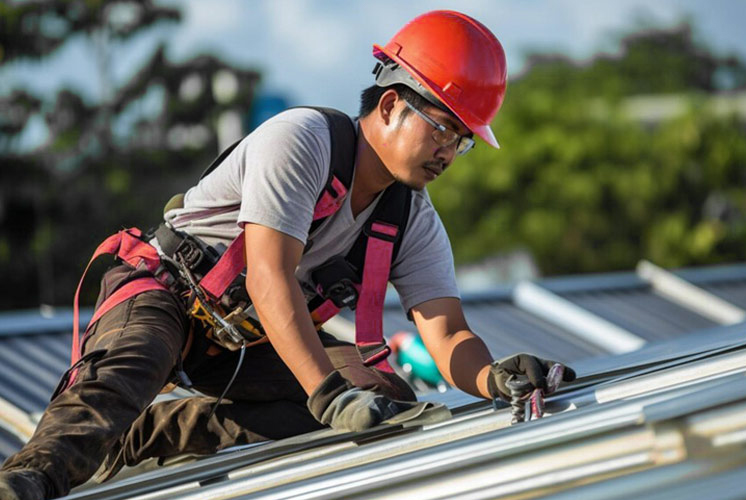Installing a new roof is a complex and precise project, and inspecting and repairing the roof structure beforehand is of utmost importance. The roof structure not only supports the weight of new materials but also withstands various weather conditions, ensuring the safety and comfort of the entire home. Through thorough inspections and necessary repairs, you can ensure the roof structure is strong enough to support the new roof. Below, we will guide you through the steps to inspect and repair roof structures before installation, ensuring a smooth and lasting result.
Evaluating Roof Load Capacity
The load capacity of a roof directly impacts the stability and safety of the new roof. Different materials, such as metal sheets, ceramic tiles, or asphalt shingles, vary in weight, making it critical to assess whether the roof structure can support these loads. Inspect beams, supports, and frames for cracks or looseness, ensuring all components are securely connected. Reinforce beams or add supports if necessary to enhance load capacity, providing a solid foundation for the new roof.
Checking for Wood Structure Rot
Rot in wooden structures poses a significant risk to roof stability, especially in humid climates where moisture can cause wood to decay. Inspect beams, rafters, and frames for signs of mould, soft spots, or darkened areas—these are early indicators of rot. Replace damaged wood or apply anti-rot treatments to ensure long-term durability. The health of the wood structure is critical to the lifespan of the new roof, making this step essential.
Repairing Aged or Damaged Metal Components
Metal components used to connect or support wooden beams, such as nails, bolts, or brackets, can rust or deform over time. Check for loose, rusty, or worn metal parts and replace damaged components. Applying anti-rust paint can extend their lifespan. Ensuring these metal components are secure and intact enhances overall roof stability, reducing the risk of movement or misalignment after the new roof is installed.
Ensuring Roof Frame Levelness and Flatness
The levelness and flatness of the roof frame are crucial for the proper installation of a new roof. A level frame ensures tighter and more aesthetically pleasing material placement. Use a level to detect any tilt or sagging. If uneven areas are found, use shims or levelling methods to make adjustments. A stable, flat frame not only affects the roof’s appearance but also determines the adhesion of waterproof layers, which is vital for long-term water resistance.
Inspecting and Repairing the Drainage System
The drainage system is an essential part of the roof structure. Poor drainage can lead to water pooling, damaging the structure and causing leaks. During structural inspection, pay special attention to drainage pipes, outlets, and gutters. Clear out debris to ensure proper water flow, and replace aging drainage components if needed. For sloped roofs, confirm that the pitch is sufficient for water runoff. Proper drainage is key to maintaining the roof’s waterproof performance, so be thorough.
Repairing and Treating the Waterproof Layer Base
The roof’s waterproof layer is the first line of defence against moisture. Before installing a new roof, inspect the waterproof base for cracks or wear, particularly at seams and edges. Address any issues with sealants or waterproof coatings to ensure a tight bond with the surface. This step provides an additional safeguard against future water damage, especially in areas prone to heavy rain or snow.
Implementing Safety Measures for Construction
Safety measures are essential during roof structure inspections and repairs. Working at heights and handling materials can be risky, so ensure worker safety by using protective nets, harnesses, and other professional equipment. For steep or wind-prone roofs, perform inspections and repairs on calm weather days to minimize risks. Proper safety precautions protect workers and prevent accidental damage to the roof structure.
Conclusion
Pre-installation structural inspection and repair of a roof are detailed processes requiring careful consideration of load capacity, material health, flatness, and waterproofing. By following these steps and making necessary repairs, you can establish a strong and durable foundation for your new roof, ensuring long-lasting stability and an attractive appearance in the years to come.


